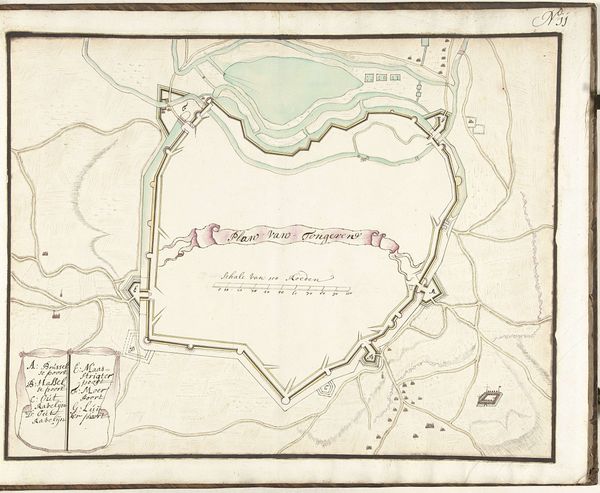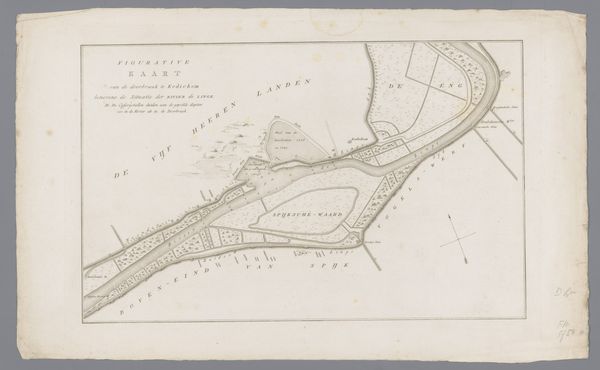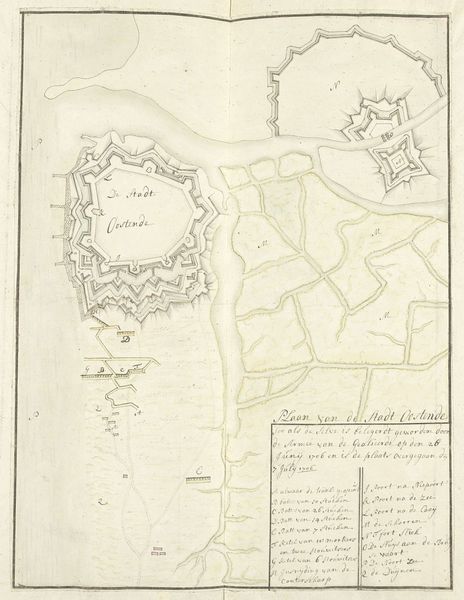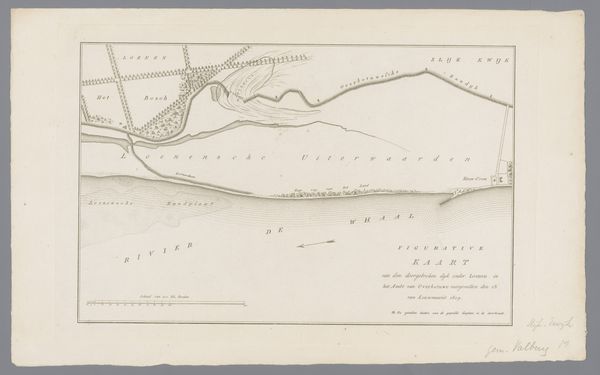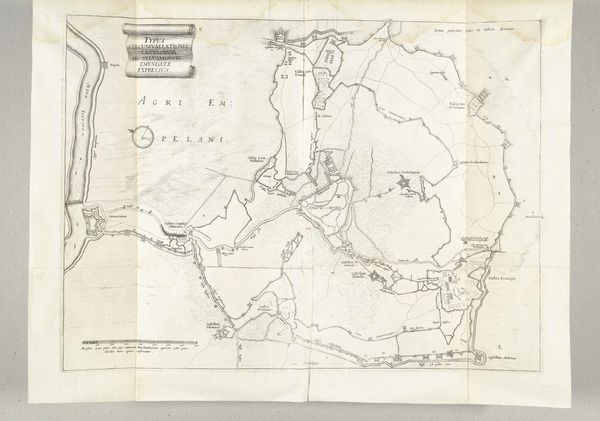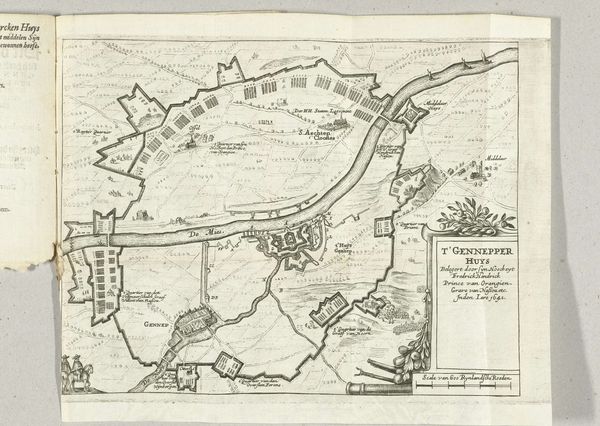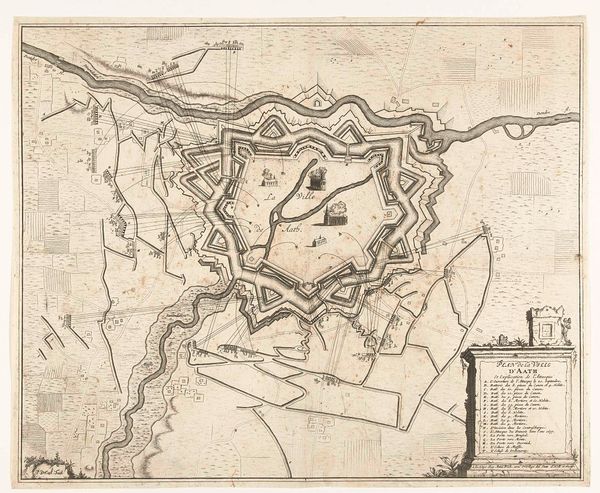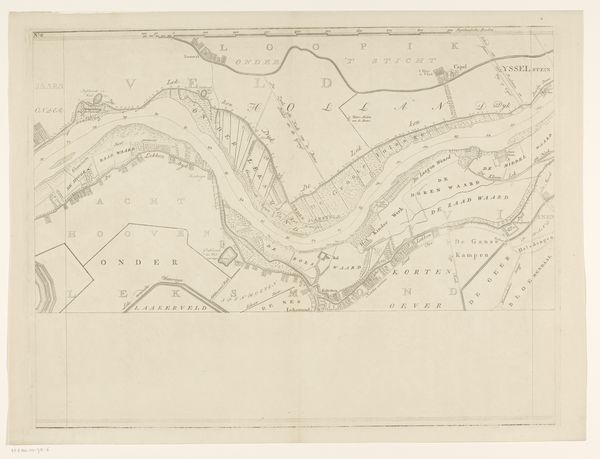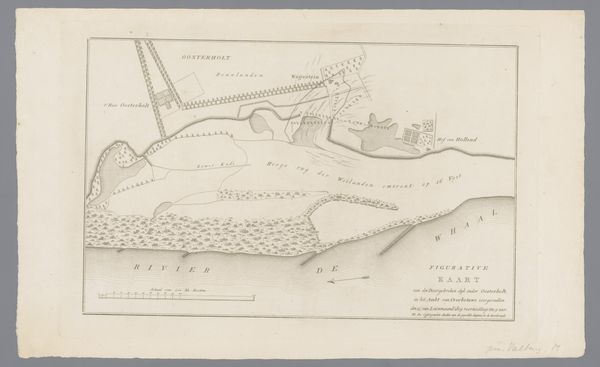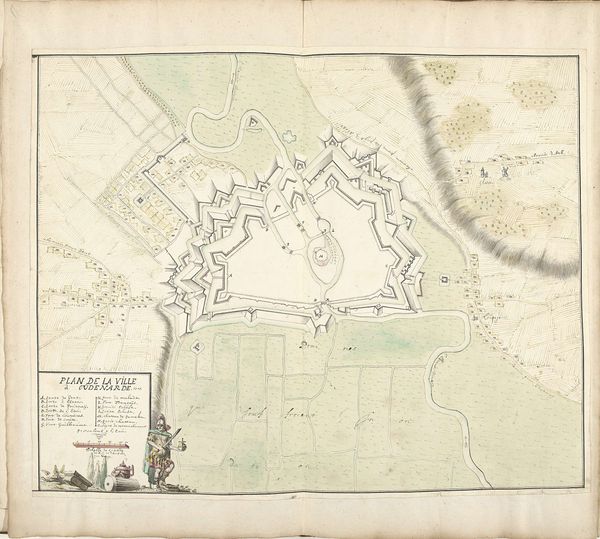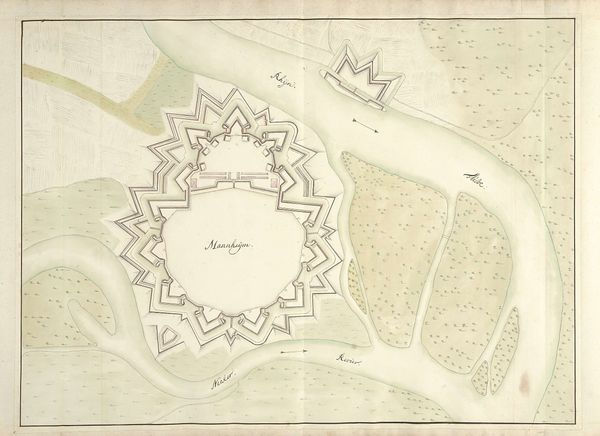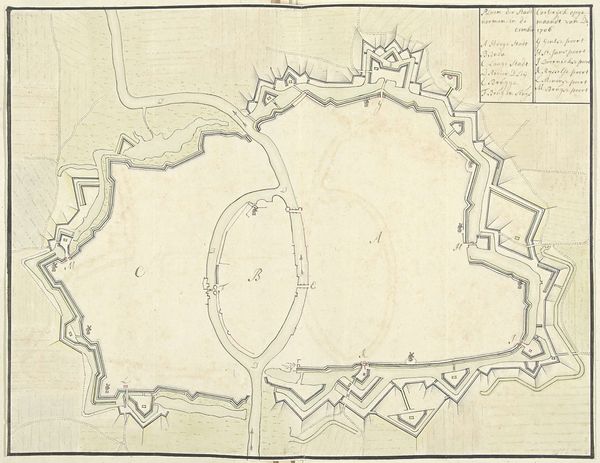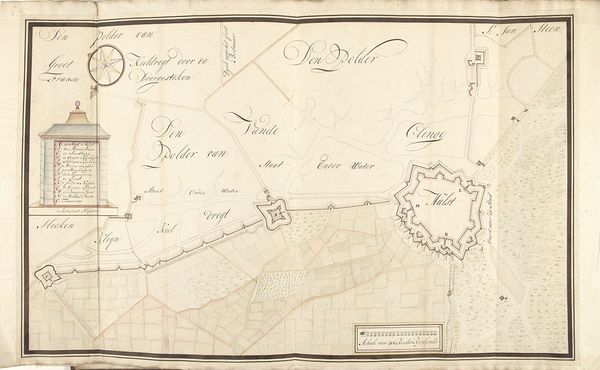
drawing, print, ink, engraving, architecture
#
drawing
#
baroque
# print
#
landscape
#
etching
#
ink
#
cityscape
#
engraving
#
architecture
Dimensions: height 535 mm, width 730 mm
Copyright: Rijks Museum: Open Domain
Curator: Samuel Du Ry de Champdoré, a fascinating figure, likely created this detailed "Plattegrond van Bonn" between 1701 and 1715. It is rendered meticulously in ink, using drawing, etching, and engraving techniques. Editor: My initial response is one of cool detachment; the monochromatic scheme drains almost all feeling from the image. All that careful work, dedicated to strategic calculation, to military prowess… Curator: And do not these plans themselves speak of memory and continuity? The architecture reflects the city’s strategic importance, a visual testament to Bonn’s role within larger power dynamics during the Baroque era. Editor: Precisely! But this kind of precision carries with it real material consequences. I wonder, what were the specific processes and division of labor that were needed for these elaborate city mappings, with such architectural detail? Curator: That precision served more than just logistical purposes; it carried psychological weight too. The angles of fortification and structures were thought to inspire respect in allies, or dread in enemies. The city fathers hoped that these representations of geometrical perfection broadcasted authority! Editor: While the image speaks to the ambition of rulers, let's consider the everyday maker. What workshop produced it? What inks and tools were used, and who profited from the sale and circulation of such imagery? We should not take for granted that the social value is one of simple 'communication', but of specific networks of consumption. Curator: I'll grant you this; these visual depictions could certainly solidify local power and impress upon onlookers their command over space, but let’s not overlook the sheer artistry and technical skill involved! The lines create a captivating landscape—a testament to Bonn, its resilience, and the enduring human effort to shape their surroundings. Editor: Right! And understanding the relationship between artisanal labor and elite political representation allows us a peek into an important juncture between making and controlling… perhaps even manipulating reality! Curator: So, in our exploration of this historic cityscape, it seems we’ve encountered more than simply geographic rendering; we've observed a glimpse into how art can be employed as cultural symbols and a demonstration of skill in manufacturing cultural meaning. Editor: Exactly, and if you're ready to look just past this 'official' imagery, maybe we can glimpse some hidden aspect of its means of production… or simply find the hidden human fingerprints on an image that otherwise feels distant, remote.
Comments
No comments
Be the first to comment and join the conversation on the ultimate creative platform.
